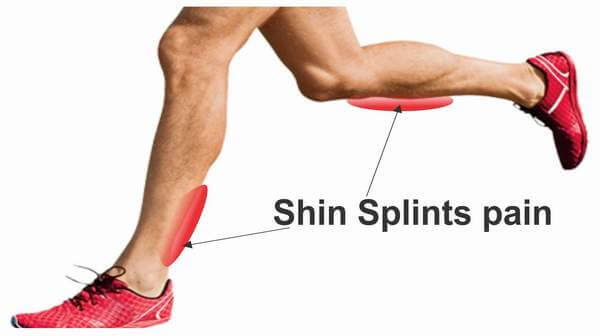What's in this article?
The term “shin splints” refers to pain along the shin bone (tibia) the large bone in the front of your lower leg. Shin splints are common in runners, dancers and military recruits.
Medically known as medial tibial stress syndrome, shin splints often occur in athletes who have recently intensified or changed their training routines. The increased activity overworks the muscles, tendons and bone tissue.
Most cases of shin splints can be treated with rest, ice and other self-care measures. Wearing proper footwear and modifying your exercise routine can help prevent shin splints from recurring.
Shin splints facts
- Shin splints are a type of “overuse injury” to the legs.
- The pain is characteristic and located on the outer edge of the mid region of the leg next to the shinbone (tibia). It can be extreme and halt workouts.
- The diagnosis requires a careful focused examination.
- A multifaceted approach of “relative rest” can restore a pain-free level of activity and a return to competition.
- The relative rest approach includes a change in the workout, ice, rest, anti-inflammatory medications, stretching exercises, possible change in footwear, and gradual increase in running activities.
Common causes of Shin Splints
There can be a number of factors at work, such as overpronation (a frequent cause of medial shin splints), inadequate stretching, worn shoes, or excessive stress placed on one leg or one hip from running on cambered roads or always running in the same direction on a track. Typically, one leg is involved and it is almost always the runner’s dominant one. If you’re right-handed, you’re usually right-footed as well, and that’s the leg that’s going to hurt.
The most common site for shin splints is the medial area (the inside of the shin). Anterior shin splints (toward the outside of the leg) usually result from an imbalance between the calf muscles and the muscles in the front of your leg, and often afflict beginners who either have not yet adjusted to the stresses of running or are not stretching enough.
But what exactly is a shin splint? There’s no end-all consensus among sports scientists, and theories have included small tears in the muscle that’s pulled off the bone, an inflammation of the periosteum [a thin sheath of tissue that wraps around the tibia, or shin bone], an inflammation of the muscle, or some combination of these. Fortunately, experts agree on how to treat them.
Symptoms of Shin Splints
The most common symptom of shin splints is pain along the border of the tibia. Mild swelling in the area may also occur.
Shin splint pain may:
- Be sharp and razor-like or dull and throbbing
- Occur both during and after exercise
- Be aggravated by touching the sore spot
Why Shin Splints happens
Shin splints have a number of different causes. You’re at risk of getting shin splints if you:
- have been running for less than five years
- run on hard surfaces or slopes
- wear poorly fitting or worn-out trainers that don’t cushion and support your feet properly
- are overweight, as this places extra stress on your legs
- have flat feet or your feet roll inwards, as this puts more pressure on your lower legs
- have weak ankles or a tight Achilles tendon (the band of tissue connecting the heel bone to the calf muscle)
- have tight calf muscles
Risk factors for Shin Splints
As mentioned, anyone who takes part in activities that involve high impact on the legs can suffer from shin splints. Other factors that increase the risk of shin splints include:
- Smoking and general lack of fitness
- Sudden increase in exercise intensity
- Sports played on hard surfaces involving stopping or starting suddenly (like basketball)
- Activities taking place on uneven ground or slopes
- Pre-existing muscle imbalance, including weak core muscles
- Wearing worn-out shoes without adequate cushioning
- Weak ankles
- Tight Achilles tendon or calf muscles
- Flat feet, pronation, or high arches
Treatment for Shin Splints
In most cases, you can treat shin splints with simple self-care steps:
- Rest. Avoid activities that cause pain, swelling or discomfort but don’t give up all physical activity. While you’re healing, try low-impact exercises, such as swimming, bicycling or water running.
- Ice. Apply ice packs to the affected shin for 15 to 20 minutes at a time, four to eight times a day for several days. To protect your skin, wrap the ice packs in a thin towel.
- Take an over-the-counter pain reliever. Try ibuprofen (Advil, Motrin IB, others), naproxen sodium (Aleve) or acetaminophen (Tylenol, others) to reduce pain.
Resume your usual activities gradually after your pain is gone.
Preventing Shin Splints from returning
You can avoid shin splints in the future by:
- wearing running shoes with the correct level of cushioning and support
- using orthotics (supportive insoles) if you over-pronate or have flat feet (running shop staff or a podiatrist will be able to advise you further about this)
- avoid training on hard surfaces whenever possible
- build up your activity level gradually
- improving your overall strength and flexibility






Leave a Comment